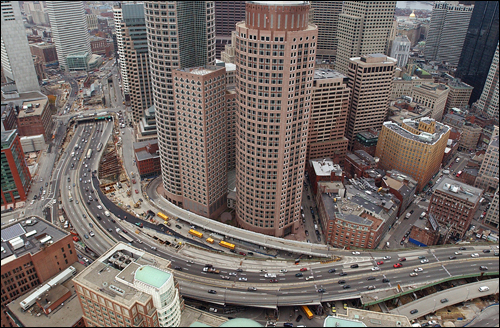I just spent the past half hour trying to find an old post of mine to quote, but my google-fu failed me.
To paraphrase, in a generation no one will remember the cost overruns, or the piece of the roof that fell. Sure the CA/T has some deficiencies, but the same can be said for all of the rapid transit lines, or the interstates as built. I'm sure if you dig through the globe archives people were bitching about corruption, shoddy workmanship, blown budgets, etc in the 1860s just as much as today. No one riding the green line says "what a waste Adams Square station was, and I cant believe how many people died digging it!"
The point is, the CA/T is one of the best things to happen to Boston, and in 100 years when people are going through it, that's all they will see; everything else will fade into the background. It's unfortunate that the most remarkable project of the last generation was a repair of one of the biggest mistakes of the past century, but it is what it is. Sure it could have been managed better, but I'd love for someone to argue that a surface highway, an open cut, or a replacement viaduct would have been better.
The debt will eventually be repaid, the N/S link provisions will eventually be used, the greenway will continue to grow and evolve, the ramp parcels will be dealt with, buildings will continue to reorient themselves towards the scar, and new development will continue. Even with all of the negatives, the big dig is an overwhelming win for Boston in the long term. Nothing that's happening along the waterfront, in the seaport, or Bullfinch triangle would be happening if the CA/T hadn't. I would argue it's a large part of the reason the city is currently immersed in the biggest building boom since before the great depression.
It's time to move on. (Well, we are. I'd say the Beacon Park realignment, Rutherford Ave/Sullivan Square reconstruction, and overpass demolitions are the next step in what the big dig started. Without it I doubt you'd see the energy and enthusiasm for these projects. I think the overruns also helped to curtail excessive spending, MassDOT is certainly operating much leaner than it did in the 90s.)



